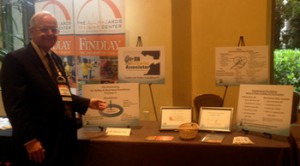As I talk with Leaders, I often hear that things are so entrenched they cannot even conceive that this type of “betterment” can happen for them.
 We know that it can, and we prove it over and over again, as we work with leaders, their teams, and their businesses.
We know that it can, and we prove it over and over again, as we work with leaders, their teams, and their businesses.
CULTURE: We help to knock down the walls that have grown up between people and groups so that the arguments and fighting stop and they learn to value and help each other. We help to drill holes in the silos of production, HR, maintenance and finance so that people can talk to each other to get the information they need to do their jobs. We help to remove the barriers that are restricting the up and down flow of critical information, improving its accuracy, so the organization can function more easily. We help to remove the barriers between the people writing rules and procedures (the work- as-imagined) and those doing the front-line work (the work-as-done). We help people to see that most of the injuries and incidents are the result of patterns and processes that need improvement and shift away from a culture of blame and criticism.
SAFETY: I believe that we do not have a right to make our living in a place where it is okay to hurt people. When we make this our top belief, many fewer people get hurt and our economic performance is a lot better as well. As we learn to work this way the barriers and roadblocks melt away and new channels and connections emerge.
LOSS: Avoiding the losses and waste means that our businesses are more competitive and healthy. How much do you suppose an OSHA Lost Time Injury costs the business?
- The pain and suffering is miserable.
- There is the direct cost of the doctors, hospitals, medications, etc.
- We loose time:
- having to investigate the injury and incident.,
- writing reports,
- having an OSHA investigation,
- perhaps the cost of challenging OSHA’s findings,
- legal costs for the company attorneys,
- preparing for a potential law suit,
- the cost of lost production time,
- the cost of bringing someone and train them to replace the injured person,
- the cost of lost sales,
- the cost of bad publicity,
- the cost of lower morale among the people,
- and so on.
BOTTOM LINE: When the safety gets right, everything else gets right as well. In this more positive culture, not only does the waste of injuries and incidents go away, people shift the way that they chose to work together resulting in other improvements like:
- fewer arguments,
- fewer grievances,
- better meetings,
- fewer meetings,
- more suggestions for improving our systems and processes,
- people taking the lead in helping to fix something that is not right,
- new ideas for better customer service emerge,
- lean manufacturing works better,
- the quality of products and services get better,
- absenteeism drops, and
- people can work together to build a better future.
When the safety performance and culture get better, the organization thrives.
These are things that each organization can work on right now. In Partner-Centered Leadership, Richard N. Knowles & Associates can help organizations to achieve all these things. This does not require investment.
- Get clear on your thinking and purpose.
- Go into your organization talking with and listening to the people.
- Help them to build on their ideas.
- Let them know how important they are to the success of the business.
- Do this with respect and honesty.
Excellent firms don’t believe in excellence – only in constant improvement and constant change.
~ Tom Peters
 It was fascinating to see the contrast between the usual, linear, mechanical approach to safety and The Complexity Leadership Process (CLP) that I discussed at my display table. A large number of people talked with me at my display table about The Complexity Leadership Process which was new to all of them. Many could not believe how quickly and dramatically the safety performance improved using the CLP. At one level the CLP looks like a simple employee involvement program, yet it is much more and also different at a deeper level than the usual employee involvement processes. One fellow, who recently wrote a book about changing the safety culture to excellence just brushed the CLP aside as something he’d already seen. The approach to safety excellence he’s written about involves 43 linear steps that take 3-5 times as long as the CLP and require a very high level of persistence and determination over many years.
It was fascinating to see the contrast between the usual, linear, mechanical approach to safety and The Complexity Leadership Process (CLP) that I discussed at my display table. A large number of people talked with me at my display table about The Complexity Leadership Process which was new to all of them. Many could not believe how quickly and dramatically the safety performance improved using the CLP. At one level the CLP looks like a simple employee involvement program, yet it is much more and also different at a deeper level than the usual employee involvement processes. One fellow, who recently wrote a book about changing the safety culture to excellence just brushed the CLP aside as something he’d already seen. The approach to safety excellence he’s written about involves 43 linear steps that take 3-5 times as long as the CLP and require a very high level of persistence and determination over many years.




